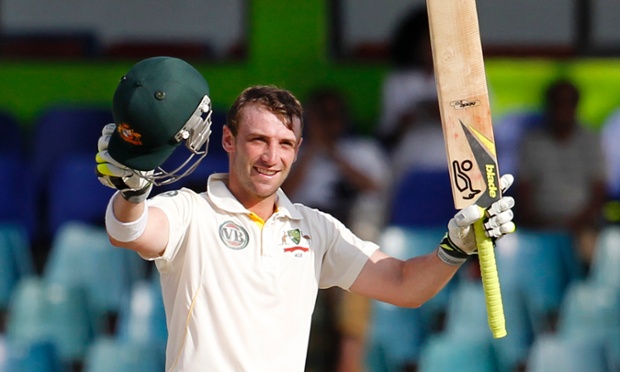By Omkar Pratapwar
In what has been deemed a freak accident, the cricketer Phil Hughes was severely injured on the pitch during an Australian cricket match. After the bowler bowled the ball, it appeared to bounce high and strike Hughes in the head. Hughes began to limp, and then collapsed on the ground. He was met immediately by training staff and was taken to St. Vincent’s Hospital in Sydney. He was pronounced dead Wednesday, November 27th.
Phillip Hughes was a 25 year old Australian cricket player for South Australia, and the Australian National team. He recently lost his place on the team, and was trying to impress his coaches to return to the team.
For those unfamiliar with Cricket, it is very similar to baseball and is very popular in Great Britain, South Asia, the West Indies, and Australia. A bowler, like the pitcher, bowls, or pitches the ball by bouncing it off the ground. Like the catcher’s glove, a bowler tries to aim for the stumps, which are 3 wooden rods placed in the ground, while the batsman tries to hit the ball away. With Phil Hughes, the bounce was high, and was heading for his head. In the video, Hughes tries swinging at the bowl, but he missed and it hit Hughes right on the side of the head.
St. Vincent’s did not reveal whether or not Hughes was in an induced coma, or not, but we do know that he is currently in critical condition in the I.C.U. Hughes received immediate medical attention from a helicopter that landed on the field, who inserted tubes into his body to allow for airflow, and was then transported to the hospital via ambulance. According to doctors, the ball hit the side of his neck and part of his head, that compressed his vertebral artery, which causes bleeding in the brain. Doctors claim that Phil’s injury was incredibly rare, as only 25 cases of vertebral artery dissection have ever been recorded.
A lot of controversy has been swirling around on the safety of players and the adequateness of equipment. Some argue that this accident was just a freak incident and shouldn’t be taken seriously. Many cricket greats support this side and believe that the equipment and helmets of players today is fine. They are quick to point out that Phil suffered from a very rare incident. However, many current players, and a few people close to Hughes say that this wouldn’t have happened if the helmets were improved. People on this side of the argument are calling for greater amounts of gear, such as neck guards, improved, bulkier helmets and even a softer ball. Proponents of this side have come up with the slogan “Discomfort or Death”. This is a bit exaggerated, but there are some serious dangers.
This incident has been compared by many to the perils that go on in baseball. Batters face the same type of risk in cricket as they do in baseball. There are so many instances of pitchers throwing a ball near the batter to “defend their territory”. Sometimes a batter will get hit intentionally, and other times it is just a case of a simple missed pitch. Either way, injuries such as broken jaws, bruised bones, broken hands, and fractures occur frequently. And sometimes, even severe injuries occur that keep players out for months even entire seasons. It is highly unlikely that any major decisions will be made as a result of this, but Australia’s upcoming match against India was cancelled. Phil has received an outpouring of love from the cricket and general sports community. The #putyourbatsout has been used to remember the young batsman. A lot of famous people have been grieving for Hughes on twitter such as Cricket legends Viv Richards, David Warner, Graeme Swann, and Sachin Tendulkar, soccer stars Gareth Bale, and Tim Cahill, singer Harry Styles, CNN reporter Piers Morgan, and many others.
What lies in store for the future of cricket is uncertain, but Phil Hughes will remain a calling cry for those who are calling for a safer game. I doubt that much will be done about this, and a lot of people will disagree with that plan. But Phil’s story won’t be forgotten and he will be remembered for as long as cricket is played.

